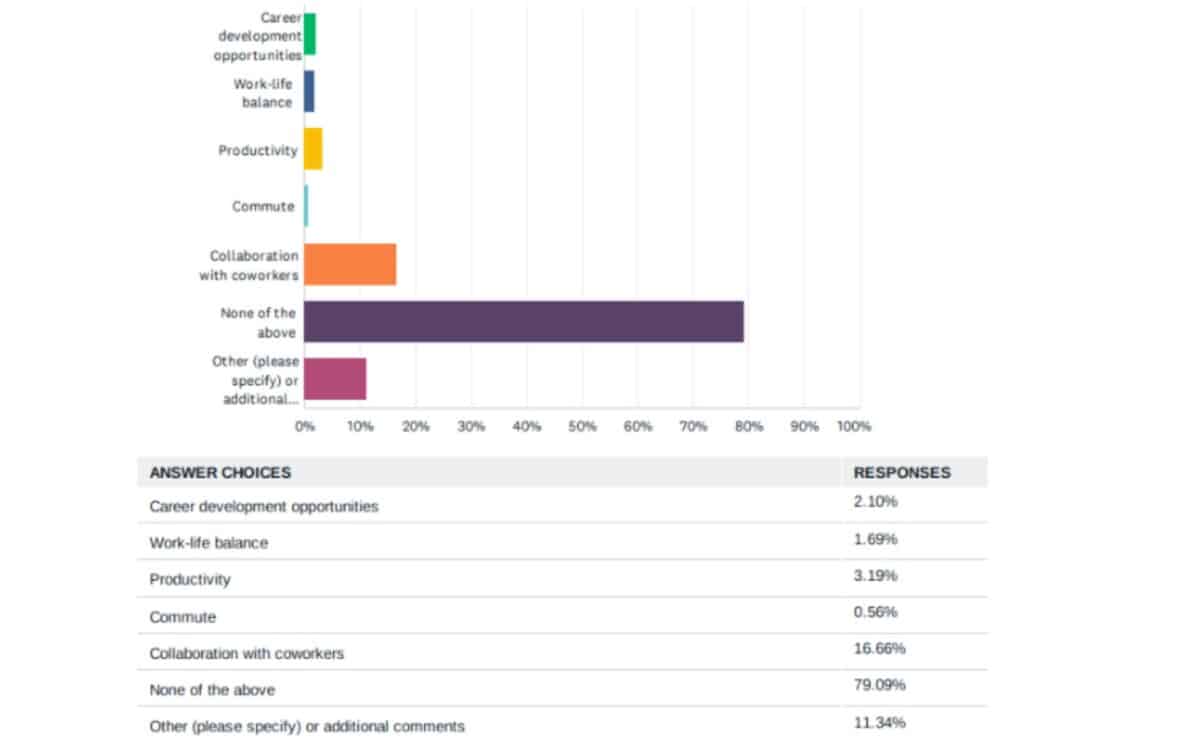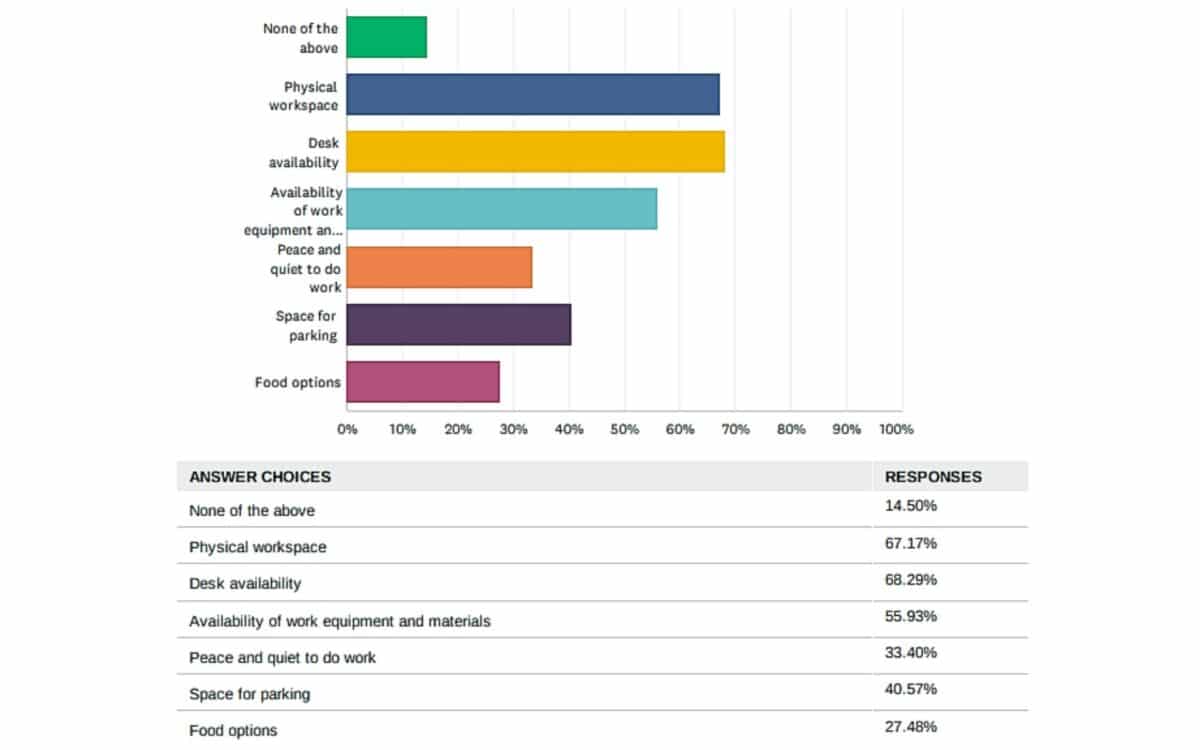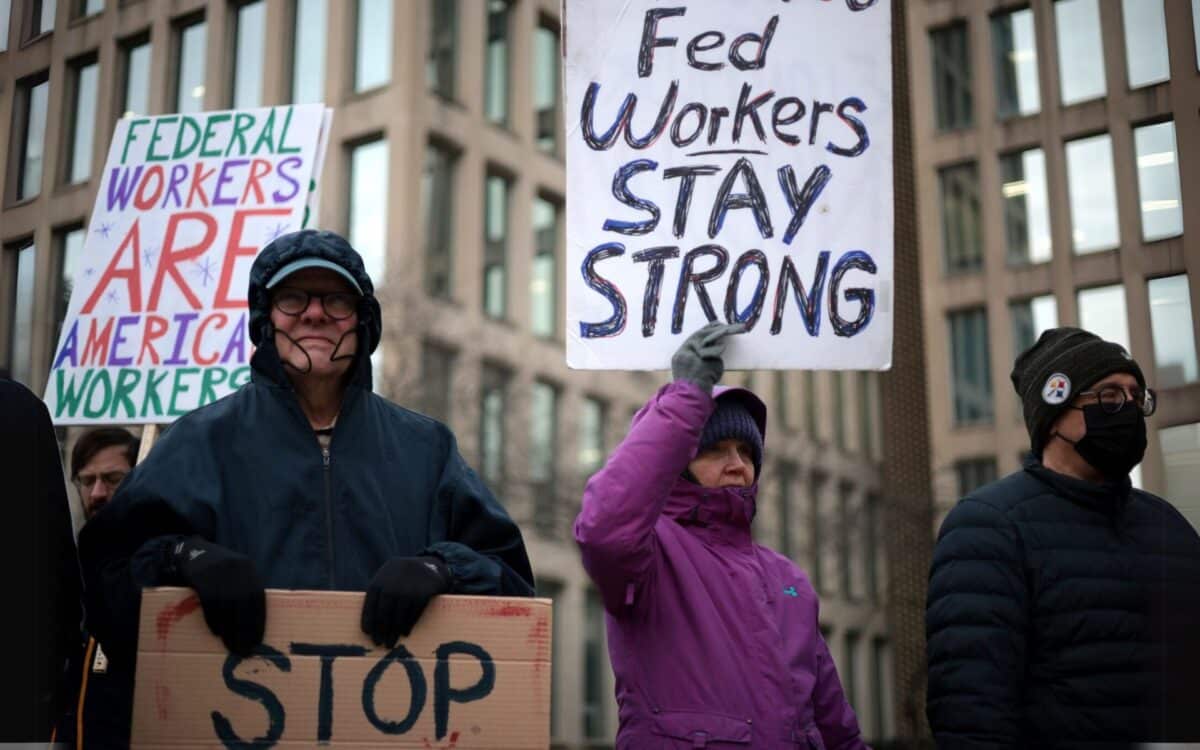Federal employees are navigating a bumpy transition back to full-time office work under a new mandate from President Donald Trump. Early accounts suggest a shift marked by complications rather than cohesion.
According to Federal News Network, many workers are raising concerns about their day-to-day experiences, from basic resources to working conditions. While the policy aims to restore in-person operations, its rollout has sparked unease across several agencies.
Working Conditions Worsen Under Return-To-Office Push
Federal employees returning to on-site work report a notable decline in their ability to perform their duties effectively. According to a Federal News Network survey conducted between March 17 and 21, nearly 80% of over 5,500 respondents said no aspect of their job had improved since returning to the office.

I spend time and money commuting longer to do exactly what I do from home, with less productivity, more background noise, more interruptions, worse amenities, worse food and no one I actually work with – one survey respondent said.
Nothing has improved — actually, all areas are worse – another employee said.
Limited bandwidth makes it harder to do my job. There are no IT peripherals and no money to purchase any. It’s loud in workspaces with virtual meetings. There are long lines to get onto the campus and in the building. There’s no parking, no cafeteria and low morale.
Just about one-third of respondents said they have enough peace and quiet to do their work. In contrast, many described working in crowded spaces where constant conversations and virtual meetings hinder concentration.
We have plenty of desks, but constant noise and interruptions have plagued our ability to focus – one said. Another added,
Some people will never wear headphones, no matter how many calls they take.
Inadequate Workspaces and Infrastructure Gaps
Federal employees describe workspaces as makeshift and overpopulated. Some said they were assigned to conference rooms, hallways, cafeterias, or even storage closets due to desk shortages.
I still do not have an assigned desk and I’m in a conference room with 20 others – one said. We are packed in like sardines.

Source : Federal News Network March 2025 return-to-office survey of 5,500 federal employees.
My desk is a card table – another employee shared. I am lucky to have been grandfathered into having a permanent desk because I have been coming a long time – said one respondent.
Other people are posted in conference rooms.
Beyond physical space, privacy is often lacking.
I have no privacy as I share a cubicle with another employee from a different agency – an employee said. It is hard to have meetings and we both are in functions that require meetings with outside stakeholders.
The need to hold meetings virtually remains unchanged.
It doesn’t make sense. I’m not with my team, and this does not promote cohesion – one said. It’s a silly check in the box to say that federal employees reported back to the office. It’s less efficient and does not have adequate IT facilities to carry out the required mission.
Internet Instability and Technical Barriers
Access to reliable internet and IT equipment remains a challenge in many federal buildings. “Our internet crashes all day long,” one employee reported. “I literally sit there for hours without access.” Another said, “The internet doesn’t work half the time, so we just sit there doing nothing.”
In one instance, a federal worker described an extraordinary workaround:
The place they told me to report for work had broken internet. So, they told me to use my hot spot. When I informed them I do not have a work phone so I cannot use my hot spot, they told me to use a stranger’s hot spot. Then they ordered me a brand-new iPhone 15 so I can hot spot at the office with my colleagues in a different state.
Infrastructure failures extended beyond connectivity.
We lost power to our whole building and spent the afternoon on a generator – said another respondent.
Logistics and Commuting Obstacles
Beyond workplace challenges, commuting and parking have become major pain points for federal employees. Only about 40% of survey respondents reported sufficient parking at their buildings.
Parking is a disaster if you don’t come in early – one respondent stated.
If you arrive late, good luck finding a parking space – another said.
People have been parking on the grass next to the parking lot because the lot fills up – a survey respondent added.
Our director warned us that police will start ticketing.
In some agencies, lottery systems and daily paid parking passes have been implemented — with passes often running out quickly.
Elevators have also become a bottleneck. “Every morning and every evening, people are queued outside elevators, or they must take stairs from the ground floor anywhere up to level 31,” an employee said.
In the last week, four people have been stuck in the elevators – another shared.
Critical Shortages and Degraded Facilities
Many respondents reported shortages of IT equipment, monitors, chairs, and even toilet paper. One employee stated, “We do not know when we will have monitors, keyboards and other equipment for the office. Some people have desks, but no chairs.”
In some buildings, toilets went unstocked and uncleaned, trash bins overflowed, and pests such as cockroaches and mice were observed. The shortages are reportedly tied to frozen government payment cards, which have blocked routine supply purchases.
Shifting Policy From Hybrid Work to Full In-Person Presence
The return-to-office directive marks a major departure from the policies of the Biden administration, which had embraced hybrid work. At that time, about 46% of federal employees were eligible to telework, spending roughly 60% of their work hours on-site. Only 10% were working fully remotely.
Agencies report notable improvements in recruitment and retention, enhanced employee performance and organizational productivity and considerable cost savings when utilizing telework as an element of their hybrid work environments
OPM stated in its most recent report to Congress.
Thoughtfully implemented alongside meaningful in-person work, telework has the potential to significantly enhance the agility, productivity and engagement of our workforce. It has enabled the government to attract and retain diverse, top-quality talent from across the nation.









